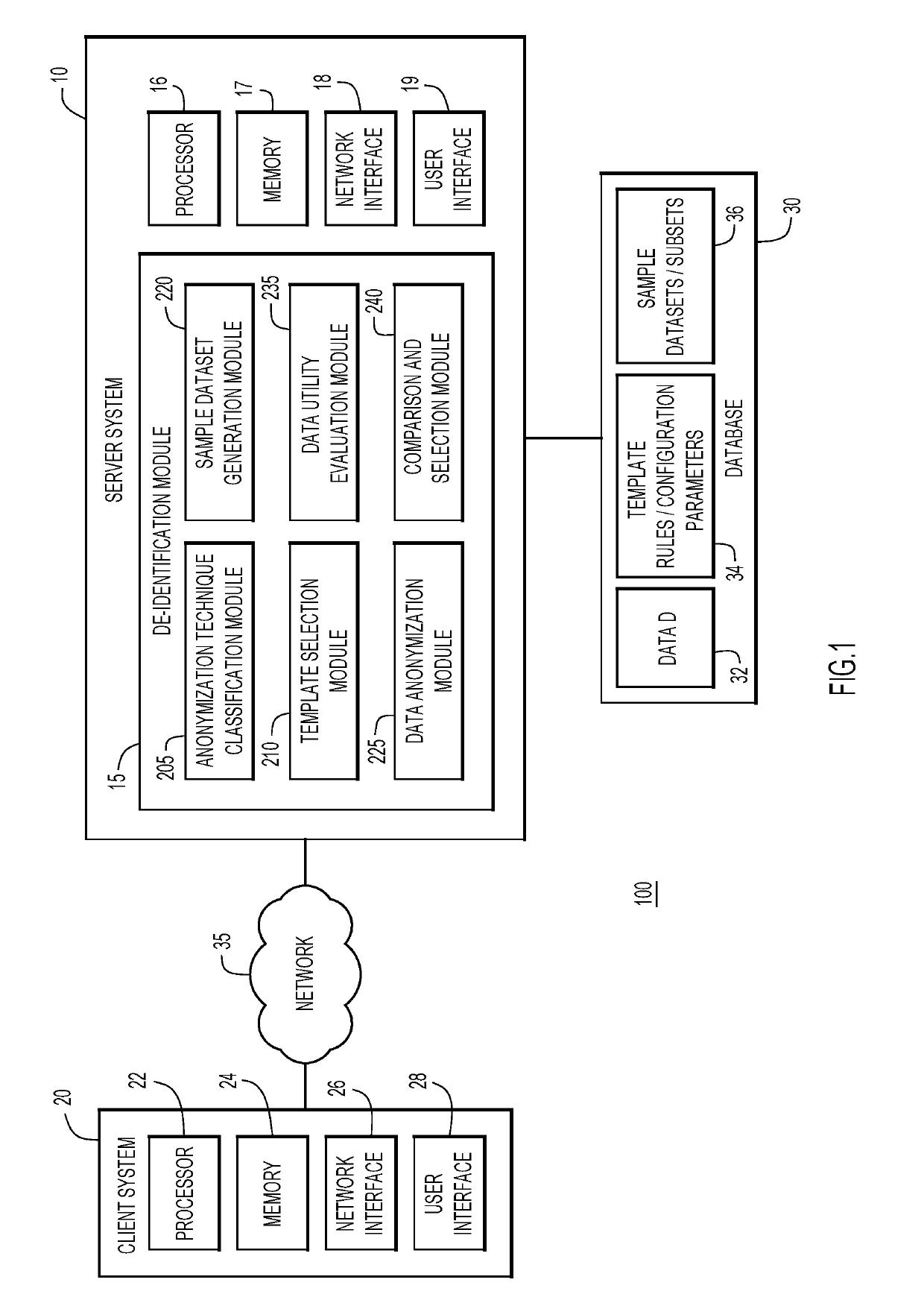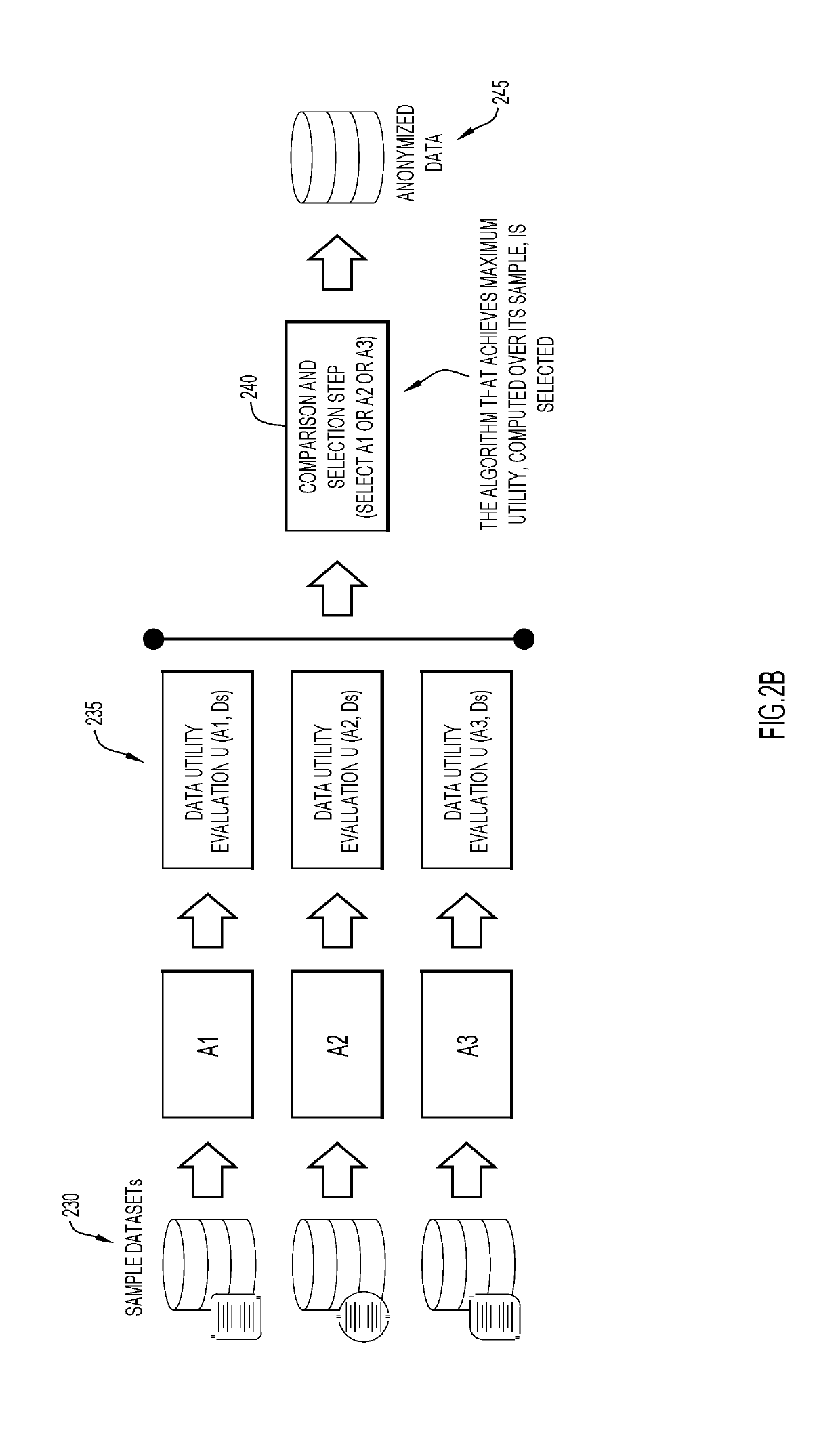Identification of optimal data utility-preserving anonymization techniques by evaluation of a plurality of anonymization techniques on sample data sets that correspond to different anonymization categories
an anonymization technique and optimal data technology, applied in the field of data deidentification, can solve the problems of increasing computational costs, computational complexity, and high computational cost in terms of the amount of time, and achieve the effect of reducing computational costs and increasing computational costs
- Summary
- Abstract
- Description
- Claims
- Application Information
AI Technical Summary
Benefits of technology
Problems solved by technology
Method used
Image
Examples
Embodiment Construction
[0016]According to embodiments of the present invention, systems, methods and computer readable media are provided herein for selecting an anonymization technique from a plurality of anonymization techniques in order to de-identify a dataset. Given a set of data anonymization techniques (A1 . . . An), a dataset D, and a data utility function U(Ai, D), the techniques provided herein may be utilized to identify which data anonymization technique (Am) of techniques (A1 . . . An), is expected to lead to the highest data utility U(Am, D) when applied on the entire dataset D. Present techniques allow a data owner to identify, in an efficient accurate manner, the anonymization technique Am to process the entire dataset D based on the results of category specific sample datasets. In some embodiments, the selected anonymization algorithm Am may be the optimal algorithm of all the algorithms (A1 . . . An).
[0017]According to aspects of the invention, data sampling techniques are provided to ge...
PUM
 Login to View More
Login to View More Abstract
Description
Claims
Application Information
 Login to View More
Login to View More - R&D
- Intellectual Property
- Life Sciences
- Materials
- Tech Scout
- Unparalleled Data Quality
- Higher Quality Content
- 60% Fewer Hallucinations
Browse by: Latest US Patents, China's latest patents, Technical Efficacy Thesaurus, Application Domain, Technology Topic, Popular Technical Reports.
© 2025 PatSnap. All rights reserved.Legal|Privacy policy|Modern Slavery Act Transparency Statement|Sitemap|About US| Contact US: help@patsnap.com



